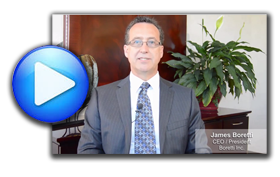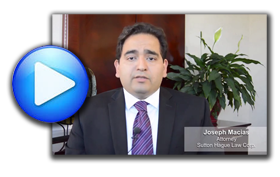Does the Cal/OSHA heat illness standard apply to indoor employees?
James Boretti (President/CEO): Technically, no. The California heat illness prevention standard general industry order 3395 applies and is directed to outdoor places of work. However, heat illness is a recognized hazard that can be applied to both indoor and outdoor employees.
Does Cal/OSHA recognize that the Industry Order 3395 only applies to outdoor employees?
James Boretti (President/CEO): Yes. This is addressed in Cal/OSHA’s FAQs, which can be found here: https://www.dir.ca.gov/dosh/heatillnessqa.html. That said, heat illness for indoor employees is a recognized occupational exposure, and should be addressed through the Injury & Illness Prevention Program which should address all known hazards and exposures, including preventive measures to protect indoor employees from heat.
Would heat illness apply to indoor places of work and could Cal/OSHA issue a citation for it?
James Boretti (President/CEO): Yes, heat illness is a recognized occupational exposure, and Cal/OSHA can and has issued citations for indoor heat illness under the injury and illness prevention program. https://www.dir.ca.gov/DIRNews/2012/IR2012-03.html
What can employers do to prevent heat illness for indoor employees?
James Boretti (President/CEO): Employers should be aware of heat illness symptoms so steps can be taken to prevent serious injury or death. We also recommend that employers encourage their employees to drink water regularly. Thirst is a sign you’re already in dehydration. This is why drinking regularly is encouraged through the Cal/OSHA standards, and can be one of the ways to help employees exposed to heat in indoor situations. When the heat illness standard first came out, Cal/OSHA investigations found that drinking water was present in 88% of the workplaces; however, 95% of the heat illness victims showed medical evidence of dehydration. https://www.dir.ca.gov/dosh/heatillnessinvestigations-2006.pdf. In response to these findings, Cal/OSHA focused on communicating the importance of drinking water to employers and employees.
Heat Recovery periods can be taken concurrently with an employee’s required work breaks, correct?
Joseph Macias (Attorney, Sutton Hague Law Corporation): We recommend against it. A Heat Recovery period is separate and distinct from an employee’s required, allowable rest breaks. Heat Recovery periods of at least five minutes are intended to be for recovery from heat symptoms to prevent employees from overheating, and must be granted to outdoor employees when they feel the need to do so to protect themselves from overheating.
Heat Recovery Breaks are required for a period of no less than five minutes, so once five minutes is up, can I make them go back to work?
James Boretti (President/CEO): The five minute time period for recovery breaks is a minimum. If an employee feels the five minute period was sufficient to recover from the heat related symptom they were feeling, then they can go back to work. However, if the employee does not feel that the five minute period was enough, they can remain and continue their Recovery Break. Keep in mind that the regulation states “employees shall be allowed and encouraged to take a Heat Recovery period in the shade for a period of no less than five minutes at a time when they feel the need to do so to protect themselves from overheating.” 8 CCR § 3395(d)(3).
 Where do you think litigation is going regarding the cool down breaks?
Where do you think litigation is going regarding the cool down breaks?
Joseph Macias (Attorney, Sutton Hague Law Corporation): Class action litigation. An employer may be found liable under the applicable statute by merely failing to provide a valid written policy to its employees.
How would such a case come about?
Joseph Macias (Attorney, Sutton Hague Law Corporation): California Labor Code section 226.7 requires employers to pay an additional hour of pay at the regular rate (a “premium wage”), where an employer fails to provide meal or rest periods to its employees. This statute was amended on January 1, 2014 to also provide a premium wage where employers fail to provide Heat Recovery periods (or cool-down periods) as required by law. Prior judicial interpretations under this statute, with regard to rest and meal periods, are unfavorable for employers.
For example, in Bradley v. Networkers Int’l, LLC, a court certified a class action law suit against an employer because the employer didn’t have a written policy authorizing rest and meal periods. 211 Cal. App. 4th 1129, 1150 (2012). In Faulkinbury v. Boyd & Associates, Inc., a court similarly certified a class action against an employer, in large part, due to the employer’s lack of a written policy providing rest periods to its employees. 216 Cal. App. 4th 220, 237 (2013). Since the penalty-enabling statute is the same, courts may rely on these cases to certify class action lawsuits against employers who employ outdoor employees and fail to have a valid written policy providing Recovery Periods.
How can an employer protect themselves from this exposure?
Joseph Macias (Attorney, Sutton Hague Law Corporation): Employers can protect themselves three ways. First of all, they need a valid written policy in their handbook. Second of all, they can use something called Attestation Clause, which requires employees to attest that they’ve received all cool down periods when they pick up their paychecks. Third of all, they can use a Drop Box Policy, which places an obligation on the employee to inform the employer if he or she feels they have not been provided all the cool down periods as required by law.
View full video – click here


